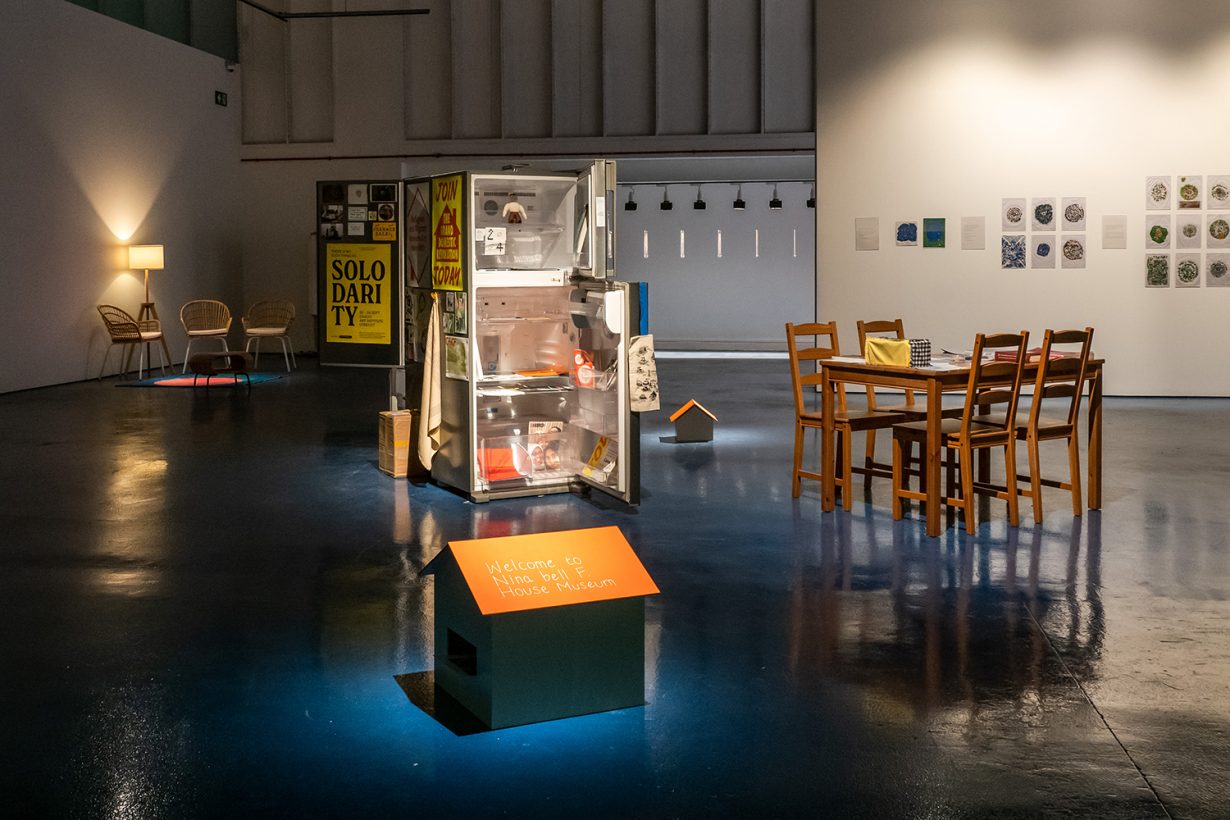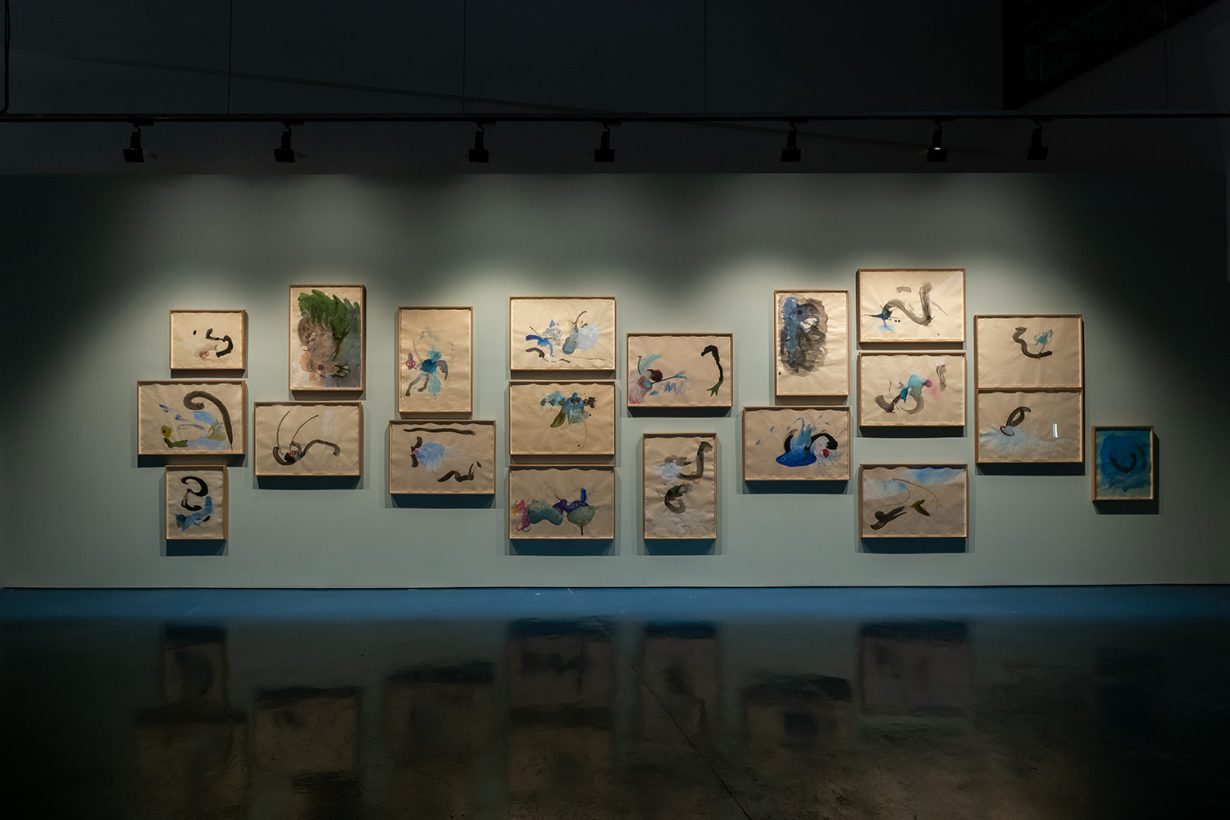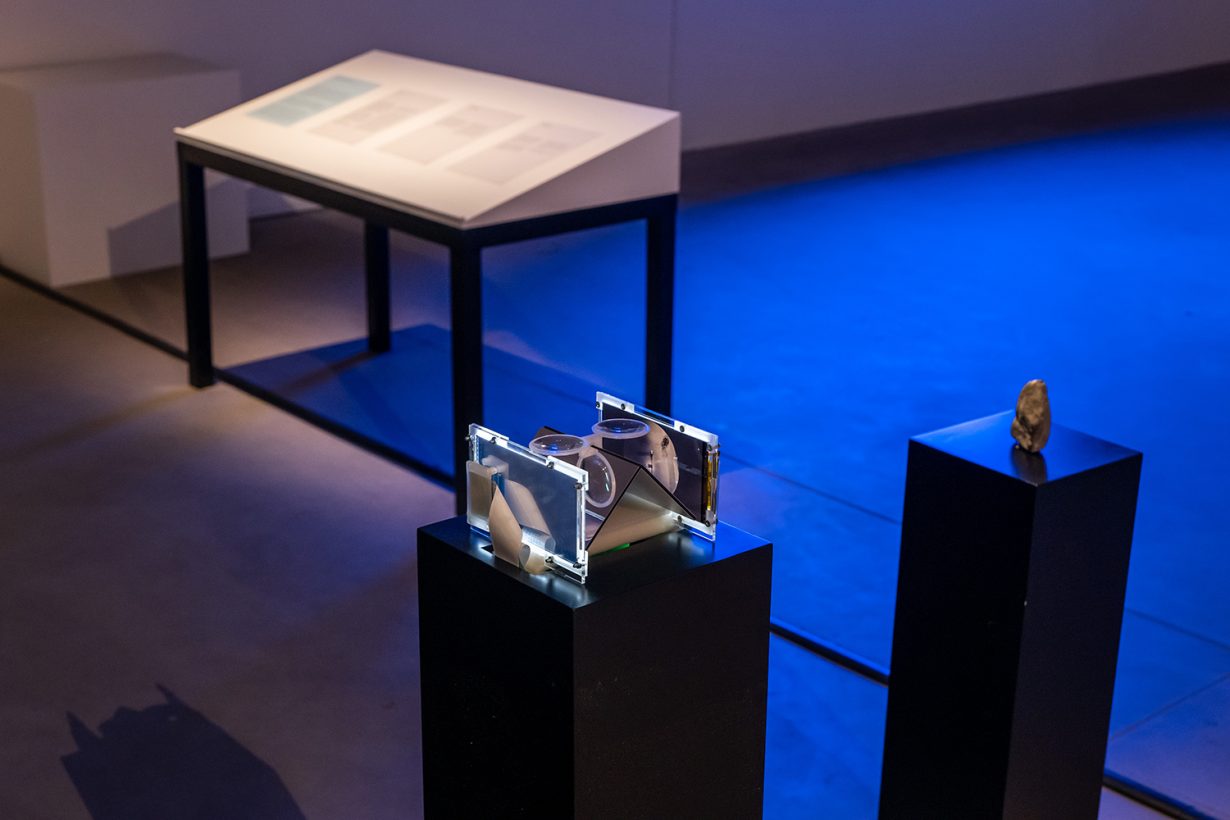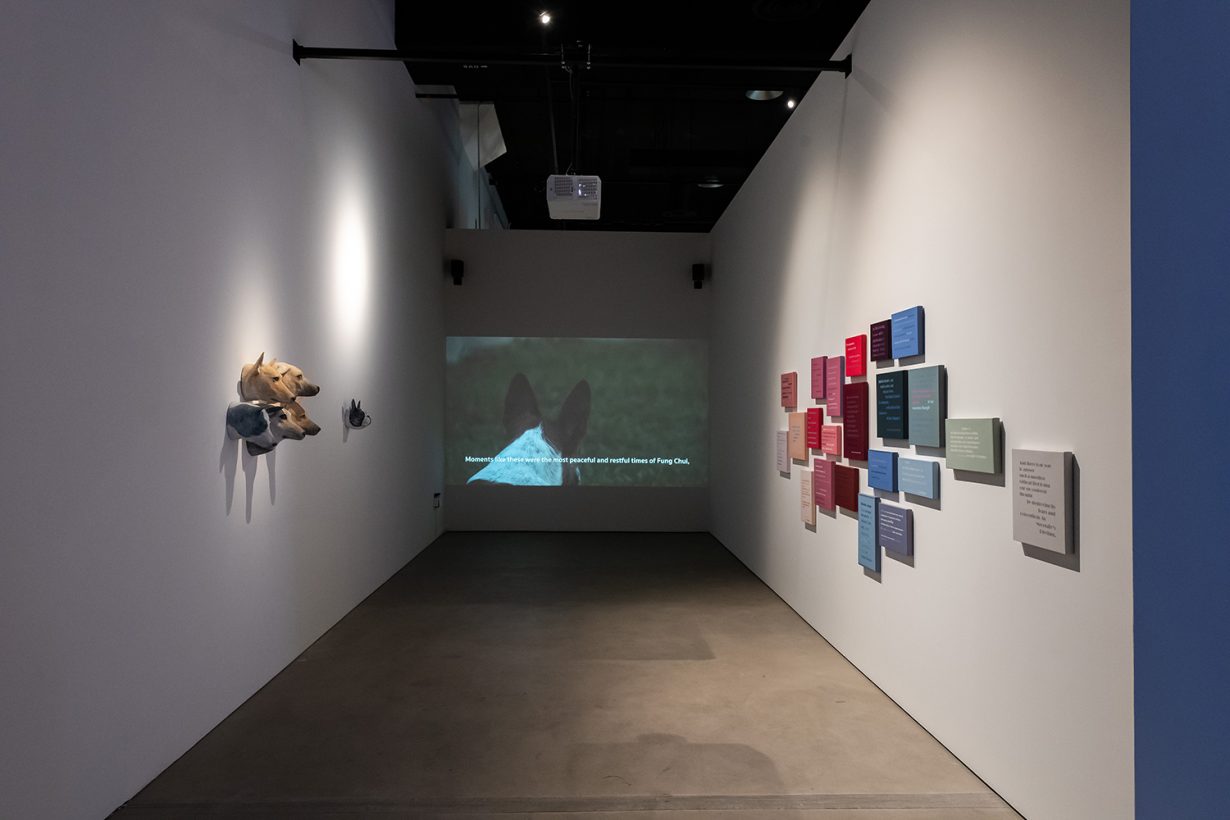The question of non-human and possibly inaccessible subjectivities hangs over this year’s Singapore Biennale – does the exhibition itself have some degree of consciousness?
On Amazon’s Mechanical Turk job platform, businesses can hire gig-workers to perform short, repetitive tasks for a few cents apiece. Many of these assignments, such as image recognition, are used to train machine-learning models, or AI, to better understand the world. Artist Aarti Sunder is interested in the intersection of analogue and digital realms, and the hidden manual-labour needed to achieve the ‘magic’ of smooth automation. In the video Ghost Cut: Some Clear Pixels Among Many Black Boxes (2021), she exposes the material conditions of workers on Mechanical Turk by asking them to film their homes or workspaces. We see grainy footage of basic amenities: table, office chair, cupboard, bare walls with exposed wiring. Playing in tandem, in a smaller, picture-in-picture window, is a fast-flowing, constantly morphing stream of images that is similar to the main footage, but not quite. Shots of a window, for example, are echoed by other similar compositions of windows or television screens; an exposed black plug translates, unstably, to a dog, clothes and trash.

A computer-whizz friend tells me that the images in the smaller window were probably generated by an image-analysis model that translates input pictures into similar output pictures. Rationally, I understand that it is a computational trick; but I can’t shake the feeling that I am watching a weird and cunning intelligence at work, a resourceful but imperfect mimicry of source data that flits between recognition and misrecognition. As to what ends that occurs, this ‘mind’ remains unreadable.

The question of non-human and possibly inaccessible subjectivities hangs over this year’s Singapore Biennale, because we have been invited to think of the event as sentient. Instead of a theme, curators Binna Choi, Nida Ghouse, Ala Younis and June Yap have given the biennale a name: ‘Natasha’. The naming, they say on the website, is to trigger new ways of relating to the world; but the more immediate suggestion to me is that the Biennale has some degree of consciousness. Which isn’t as far-fetched as that might sound if you move in panpsychic circles, which propose that all things have mind-like qualities. Even if you do not, it remains an interesting question: how would a biennale experience and act upon the world? And how would the world – and our responses to that event – change it?

I was hoping the naming exercise would translate to a reimagination of the biennale’s format or purpose, but Natasha doesn’t quite rise to the occasion. Natasha remains highly conventional, from its process (commissioner selects curator; curator selects artists) down to its outcome (large centralised venue at the portside Tanjong Pagar Distripark; a smattering of works in several satellite locations). That doesn’t mean that the exhibition is not coherent, insightful or even occasionally moving. There was no official theme, but it could have been some variation of a posthuman focus on multi-species, multi-being care and flourishing. Capturing the post-pandemic mood, Natasha taps into the tender, humbled, exhausted-yet-hopeful feelings of a convalescent humankind recognising its frailty and the interconnectedness of all existence. The broad category of the non-human – dogs, trees, ghosts, water, the weather, AI – ‘express’ their individual agencies. Floods turn into snake-like forms (Die Flut (The Flood), 2022, Ali Yass), water dispensers speak (Names of Water, 2022, Donghwan Kam), and the markings on rocks tell stories (Tales in Stone: In Search of the Language of Primordial Paradise, 2022, Shin Beomsun).

On the whole, though, it was business as usual. I considered the possibility that I was the problem; that is, that I was incapable of embracing the brief to break out of my habitual modes of perception. (All biennales have the potential to come alive – if only I could free my mind!) Perhaps. That said, I did participate – wholeheartedly, spontaneously, non-touristically. At The Sensing Salon, I experienced ‘fake therapy’ by pulling random cards that gave instructions on how to heal someone (Note on card: Enhance what is already happening.) I salivated at Wu Mali’s documentary on the migrant cuisines of the port city of Cijin (Cijin’s Taste of Empires, 2022). Meanwhile, Araya Rasdjarmrearnsook’s multimedia installation featuring a sculpture of her deceased rescue dog, which was crippled, utterly destroyed me (Some Unexpected Events Sometimes Bring Momentary Happiness, 2017). The sculpture of her beloved pet, looking at footage of itself jumping and loping in a broken dance around the legs of its owner, spoke movingly about the potential for kinship between species and our shared mortality.

All these responses, arguably, are part and parcel of the multisensorial experience of any decently diverse biennale. The issue is to do with Natasha’s brief – she asks audiences to see, feel and think differently without doing anything radically different herself. Perhaps it would be more realistic to expect that change will come incrementally. Natasha has already taken an important step by losing the event’s typical Southeast Asian focus. This relieved her of the problematic burden of ‘representing’ the region and the imperialistic overtones of a richer, more developed nation speaking on behalf of its neighbours. What next, then? Change and disruption seem to be the aspiration for this edition. I would encourage Natasha to pick up on these themes and to look within for inspiring archetypes to guide further action. Here, I’m thinking of the half-woman, half-dish deity in Natasha Tontey’s mixed-media installation Garden Amidst the Flame; Lacuna for Compassion (2022). The film, which explores the animist cosmologies of the Minahasan tribe, a stone-worshipping indigenous group from North Sulawesi, is a chaotic mash-up of folk beliefs, marine ecology, girl power activism and fantasy. In the film, a group of teenage girls from a war dance troupe go on a magical journey. This hybrid goddess roars onto the scene on a motorbike, blowing cigarette smoke to bless the itinerants. Her form is inspired by the coelacanth, a rare deep-sea fish that has been around since prehistoric times, and which has recently been spotted in Indonesian waters; her spicy attitude, from her flowing white hair to fishnet stockings, is freewheeling and fearless. I don’t think she does things by halves.
Singapore Biennale
16 October 2022 – 19 March 2023
Various venues, Singapore
